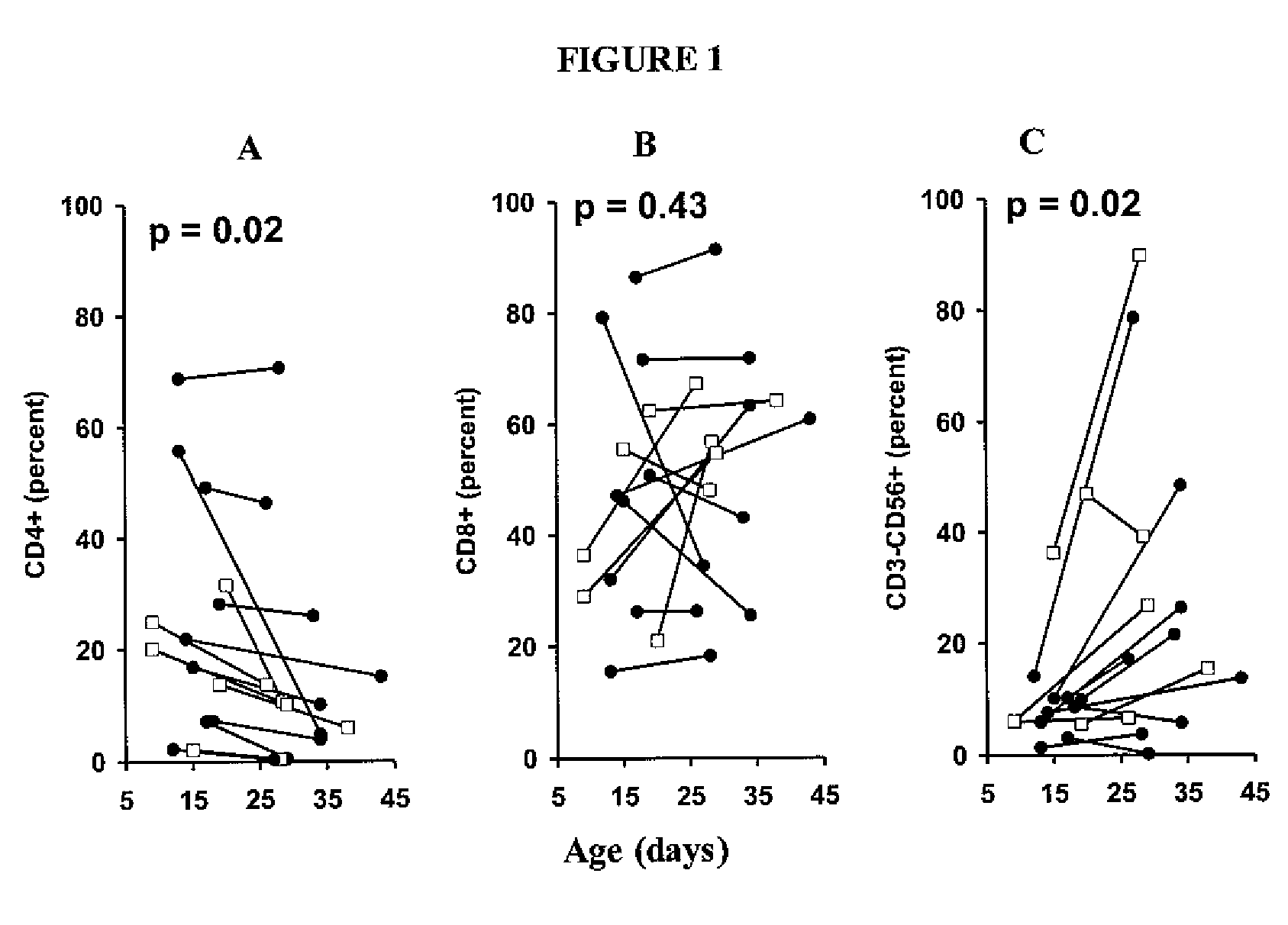Adoptive cell therapy with young t cells
a technology of t cell and t cell, which is applied in the direction of antibody medical ingredients, drug compositions, peptide/protein ingredients, etc., can solve the problems of regulatory, logistical, technical, and logistical challenges of introduction
- Summary
- Abstract
- Description
- Claims
- Application Information
AI Technical Summary
Benefits of technology
Problems solved by technology
Method used
Image
Examples
example 1
[0063]This example demonstrates the generation of “young” tumor-infiltrating lymphocytes (TIL).
[0064]Patients were entered into clinical protocols and signed informed consents that were approved by the Institutional Review Board of the National Cancer Institute prior to tumor resection. TIL were prepared as previously described in detail (Dudley et al. J Immunother. 26:332-42 (2003)). Briefly, multiple independent TIL cultures were set up using enzymatic digests and tumor fragments (1 mm3) procured by sharp dissection. TIL from tumor digests were generated by culturing single-cell suspensions (5×105 / ml) obtained by overnight enzymatic digestion of tumor fragments in media containing collagenase, hyaluronidase, and DNAse. Fragments and digests were initiated in 2 ml wells of complete medium (CM) and IL2 (6000 IU / ml, Chiron Corp., Emeryville, Calif.) in a humidified 37° C. incubator with 5% CO2. CM consisted of RPMI1640 with glutamine, plus 10% human AB serum, 25 mM HEPES, 10 μg / ml ge...
example 2
[0068]This example demonstrates the testing of young TIL cultures for specific reactivity.
[0069]When cultures designated for young TIL generation expanded to confluence in 2-ml wells, they were tested for specific reactivity. Because the young TIL were set up in large numbers (typically groups of 24 per tumor) it was not feasible to count each TIL culture individually. The young TIL specificity assay measures activity per volume rather than activity per cell. Each well was mixed thoroughly, and exactly one hundred microliters of lymphocytes (estimated 1×105 cells) was washed and cocultured with 1×105 autologous or HLA-mismatched tumor cells overnight. IFN-γ release was then measured with enzyme-linked immunosorbent assay (ELISA). A TIL culture was defined as possessing specific reactivity if IFN-γ release was twice background (coculture of TIL with HLA-mismatched tumors) and at least 200 pg / mL unless otherwise noted.
[0070]This example demonstrated the testing of young TIL cultures f...
example 3
[0071]This example demonstrates the generation of young lymphocytes for adoptive transfer therapy by growth of TIL from melanoma tumors.
[0072]The materials used in this Example include: Ca++-, Mg++-, Phenol red-free Hanks' balanced salt solution (HBSS) (BioWhittaker); RPMI 1640 with L-Glutamine (BioWhittaker; Walkersville, Md.); AIM-V medium, (GIBCO, Life Technologies; Grand Island, N.Y.); Human serum, type AB (Approved source with appropriate COA); Recombinant human IL-2 (106 CU / ml, Chiron Corp., Emeryville, Calif.) (Note: 1000 Cetus Units (CU)=6000 International Units (IU)); Collagenase, type IV, 1 g / liter stock enzyme medium (Sigma-Aldrich; St. Louis, Mo.); Hyaluronidase, type V, 100 mg / liter stock enzyme medium (Sigma-Aldrich); Deoxyribonuclease (DNAase), type IV, 30,000 units / liter stock enzyme medium (Sigma-Aldrich); Gentamicin sulfate, 10 mg / ml, stock (BioWhittaker) (Omit if patient is allergic to gentamicin); L-Glutamine, 29.2 mg / ml, stock (Mediatech; Herndon, Va.); Penicill...
PUM
| Property | Measurement | Unit |
|---|---|---|
| Time | aaaaa | aaaaa |
| Time | aaaaa | aaaaa |
| Time | aaaaa | aaaaa |
Abstract
Description
Claims
Application Information
 Login to View More
Login to View More - R&D
- Intellectual Property
- Life Sciences
- Materials
- Tech Scout
- Unparalleled Data Quality
- Higher Quality Content
- 60% Fewer Hallucinations
Browse by: Latest US Patents, China's latest patents, Technical Efficacy Thesaurus, Application Domain, Technology Topic, Popular Technical Reports.
© 2025 PatSnap. All rights reserved.Legal|Privacy policy|Modern Slavery Act Transparency Statement|Sitemap|About US| Contact US: help@patsnap.com



